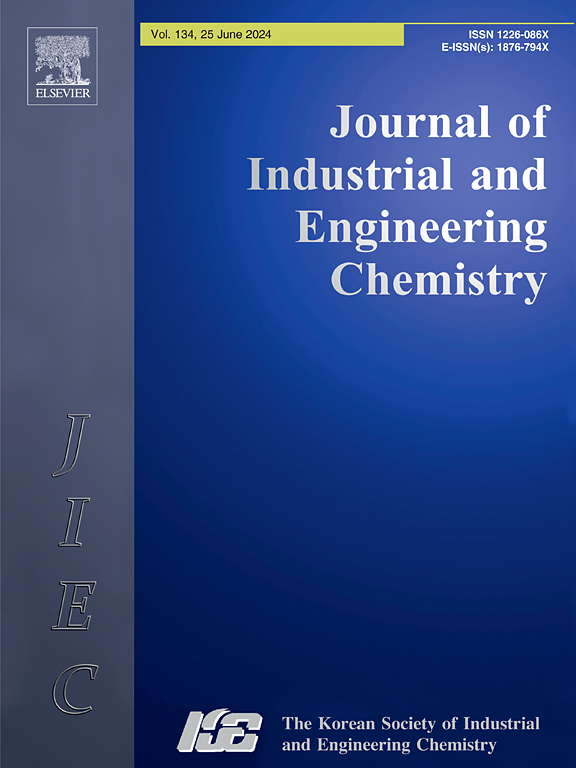Development of anion exchange membrane-based electrochemical CO2 separation cells for direct air capture
IF 5.9
3区 工程技术
Q1 CHEMISTRY, MULTIDISCIPLINARY
Journal of Industrial and Engineering Chemistry
Pub Date : 2024-10-28
DOI:10.1016/j.jiec.2024.10.049
引用次数: 0
Abstract
The use of direct air capture (DAC) technology, which directly captures and removes carbon dioxide (CO2) from the atmosphere is vital for carbon neutrality. This study investigates the applicability of an electrochemical cell for separating CO2 using an anion-exchange membrane (AEM) in DAC applications. Anions such as OH−, CO32−, and HCO3− are conducted through the AEM, and the cell mechanism is determined by the main ion-type transferred. The composition of the gas generated at the anode was analyzed to understand the operating mechanism. Moreover, the operating conditions of the electrochemical cell were optimized to maximize the CO2-capture ratio. To lower the ohmic resistance of the electrochemical cell containing a dry anode, the cathode was used under excessively humid conditions along with an adequately hydrated AEM. Furthermore, the impact of serpentine and metal-foam flow fields on the cell performance was confirmed by observing the behavior of surplus water droplets on both types of systems. The fabricated device demonstrated a CO2 capture ratio of 95.7 % with air containing 400 ppm of CO2, confirming its viability in DAC technology. This study offers guidance for future studies regarding the development of high-performance carbon-capture systems with a widespread applicability.

求助全文
约1分钟内获得全文
求助全文
来源期刊
CiteScore
10.40
自引率
6.60%
发文量
639
审稿时长
29 days
期刊介绍:
Journal of Industrial and Engineering Chemistry is published monthly in English by the Korean Society of Industrial and Engineering Chemistry. JIEC brings together multidisciplinary interests in one journal and is to disseminate information on all aspects of research and development in industrial and engineering chemistry. Contributions in the form of research articles, short communications, notes and reviews are considered for publication. The editors welcome original contributions that have not been and are not to be published elsewhere. Instruction to authors and a manuscript submissions form are printed at the end of each issue. Bulk reprints of individual articles can be ordered. This publication is partially supported by Korea Research Foundation and the Korean Federation of Science and Technology Societies.

 求助内容:
求助内容: 应助结果提醒方式:
应助结果提醒方式:


